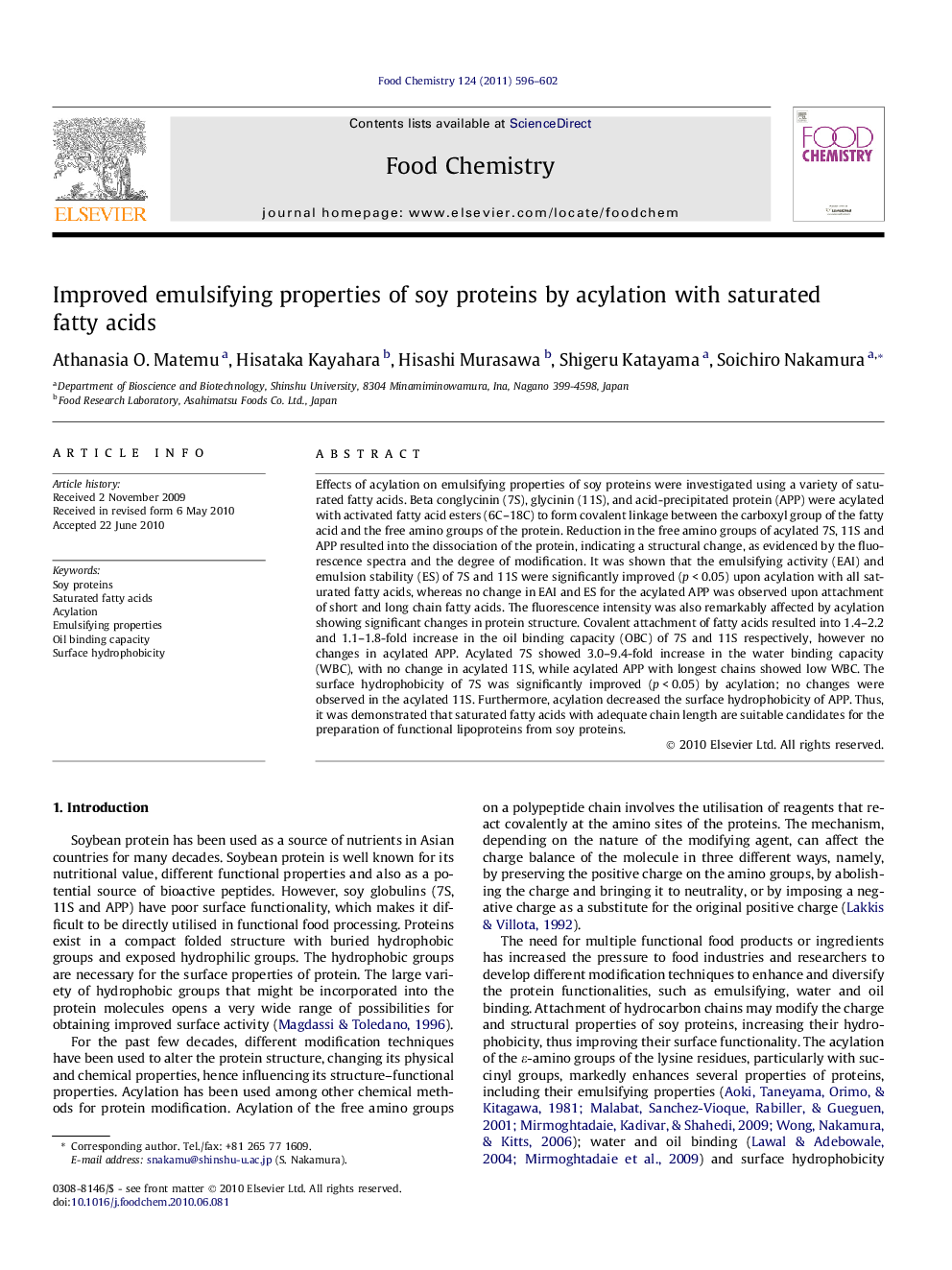| Article ID | Journal | Published Year | Pages | File Type |
|---|---|---|---|---|
| 1184965 | Food Chemistry | 2011 | 7 Pages |
Effects of acylation on emulsifying properties of soy proteins were investigated using a variety of saturated fatty acids. Beta conglycinin (7S), glycinin (11S), and acid-precipitated protein (APP) were acylated with activated fatty acid esters (6C–18C) to form covalent linkage between the carboxyl group of the fatty acid and the free amino groups of the protein. Reduction in the free amino groups of acylated 7S, 11S and APP resulted into the dissociation of the protein, indicating a structural change, as evidenced by the fluorescence spectra and the degree of modification. It was shown that the emulsifying activity (EAI) and emulsion stability (ES) of 7S and 11S were significantly improved (p < 0.05) upon acylation with all saturated fatty acids, whereas no change in EAI and ES for the acylated APP was observed upon attachment of short and long chain fatty acids. The fluorescence intensity was also remarkably affected by acylation showing significant changes in protein structure. Covalent attachment of fatty acids resulted into 1.4–2.2 and 1.1–1.8-fold increase in the oil binding capacity (OBC) of 7S and 11S respectively, however no changes in acylated APP. Acylated 7S showed 3.0–9.4-fold increase in the water binding capacity (WBC), with no change in acylated 11S, while acylated APP with longest chains showed low WBC. The surface hydrophobicity of 7S was significantly improved (p < 0.05) by acylation; no changes were observed in the acylated 11S. Furthermore, acylation decreased the surface hydrophobicity of APP. Thus, it was demonstrated that saturated fatty acids with adequate chain length are suitable candidates for the preparation of functional lipoproteins from soy proteins.
